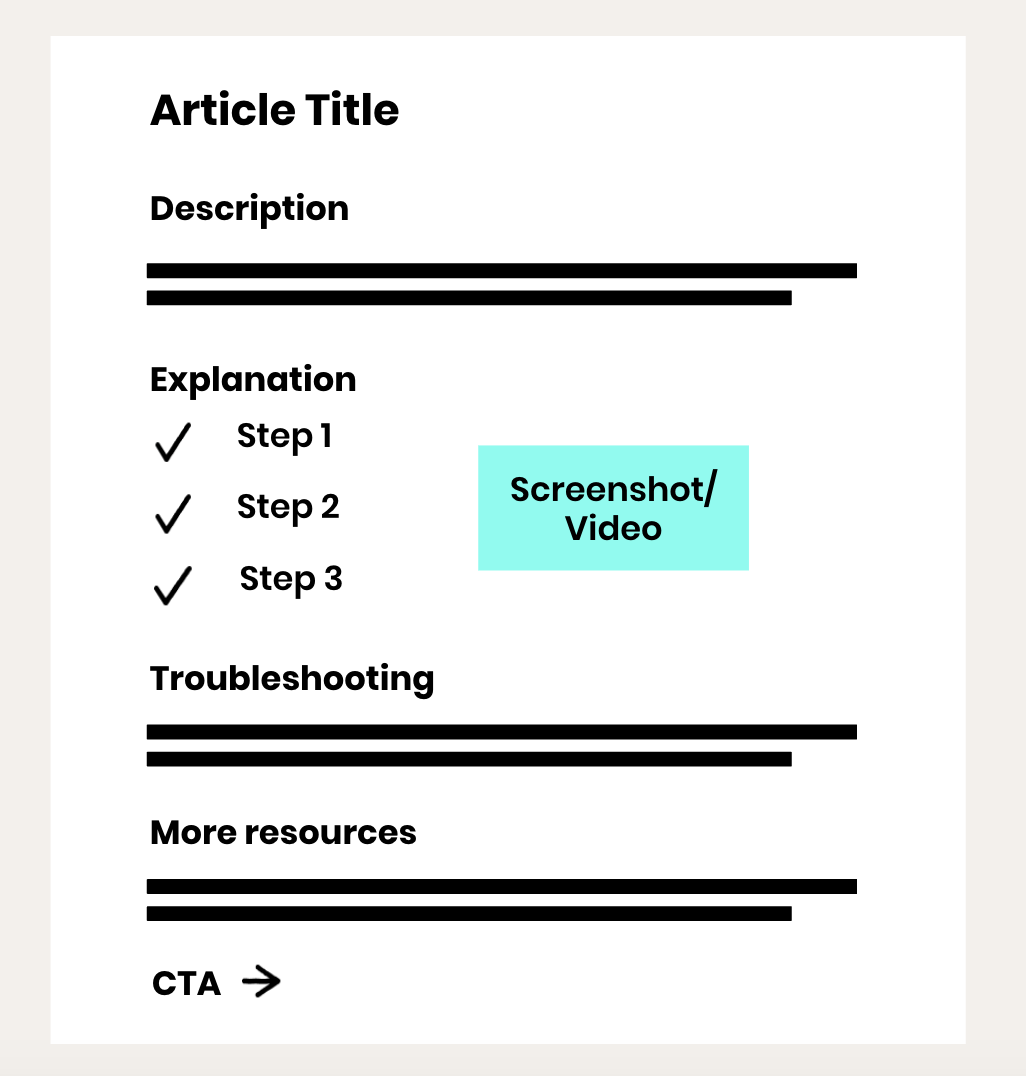
Get ready for AI bots by optimizing your knowledge base
Main illustration: Kyle Benson
A great knowledge base has always been a crucial element of effective, personalized support.
Now, with the advent of AI agents like Fin, well-structured, comprehensive, up-to-date knowledge bases will be front and center.
What is a knowledge base?
A knowledge base, or help center, is a collection of articles that contain helpful answers, tips, and other important information related to your product or service that customers can easily search from one centralized location.
Fin, Intercom’s AI Agent, can consume all the information in your knowledge base, help center, or any public URL within minutes to immediately offer your customers accurate and trustworthy answers.
If your help content is well-written, well-structured, and covers everything you want an AI bot to be able to answer, you’re essentially ready to go. Nevertheless, there are a couple of things you can do to ensure your content is optimized for AI support, both around creating new help content, and optimizing existing content.
Do you have more questions about Fin? Learn more from the topics raised at our recent Q&A session
Optimizing your knowledge base for AI support
So how do you make sure your knowledge base is ready to work with an AI agent (or chatbot)?
1. Create new content to fill gaps in your knowledge base
Now is the time to audit your help center or knowledge base content. Are there gaps you’ve been meaning to fill, but you just haven’t gotten around to it? To experience the full benefit of an AI tool, it’s important that any solution that can be added to your knowledge base, is.
Our own Support team ran a full audit of more than 700 articles before adding Fin, to ensure all information it accessed would be accurate and up-to-date – and that any gaps were filled.
When you know something inside and out, identifying what others may find confusing can be a challenge. Ask yourself these questions:
- Are there trends or patterns among your customer conversations that a help article might address?
- Look at your saved replies; are there any that might make sense as a help center article? Even if the content doesn’t seem substantial enough for its own article, it’s a good idea to add an FAQ article for short snippets of information that have no other obvious home.
- What questions are making their way through to your support team? Are there incidences where your customers should have been able to self-serve, but the material was unavailable?
- If help articles already exist, do they need to be optimized to prevent customers bypassing them in favor of your team?
Tips for rapidly producing valuable new help content
Create templates for common topics
Your support team members shouldn’t have to build every new article from scratch. Building a template for your knowledge base documentation – even if it’s just a simple sketch or document – will help your team understand what a successful article should look like, and make production much quicker. A sample template might look something like this:

Collaborate with other customer-facing teams
It’s important to seek regular feedback from other customer-facing teams to gain critical insights that drive growth and improve your product or service.
- Reach out to your sales team, and any other team that frequently interacts with your customers, to find out the issues they’re encountering in their interactions. These feedback loops provide additional context on your customers’ issues so you can tailor your solutions to their preferences and needs.
- Build a culture of knowledge management across these teams, encouraging them to use the knowledge base as their own support tool, and to flag content that needs updates, improvements, or elaboration.
2. Optimize and update existing content
The more simple, straightforward, and comprehensive your articles are, the easier it will be for AI bots like Fin (and your customers) to consume them. If it’s confusing for a human to read, it’ll be confusing for Fin aswell. Focus on:
- Simplifying language: Think about how your users frame questions and ensure that the answer is phrased in a relevant and accessible way. Avoid basic “yes” or “no” answers; instead, use full sentences to disambiguate the answer for Fin, and ultimately, for your customers. For example, your customer asks “Do I need to use the original outer shipping box to return an item?”. Instead of saying “no”, say something like “You can use your own packaging when sending an item back for a return or exchange, no need to save the original shipping box.”
- Creating a scannable structure: Structuring your help articles in a more streamlined way not only helps humans, but AI too. Use tables, numbered lists, and bullet points to make it easier for AI bots like Fin to find and provide the answer your customer is looking for.
- Restating questions: Ensure your help content restates questions – this helps Fin gather the right information and answer correctly and in context. Think of it as an extra layer of clarity that helps both readers and your AI chatbot.
- Making sure articles clearly identify who the content is aimed at: If you have a variety of user types, and your help content differs for each one, ensure that each help article includes a clear reference to the type of user the content is geared towards.
- Adding explanatory text to images or videos: A lot of support content is provided in the form of screenshots or explainer videos – they’re great formats for explaining complex instructions. However, AI chatbots are not able to interpret images or videos and deliver the information to customers. So it’s a good idea to include step-by-step instructions, with clear bullet points and headers, to assist the ingestion of the important material. The help content is also more accessible for visually impaired customers.
- Explaining key terms: Explain the meaning of special terms or spell out acronyms the first time you use them, even if you think your audience already knows what they mean.
How to prioritize the most important updates to help center content
We get it, things are moving fast. You need a way to prioritize the updates to make your help center as effective as possible, as soon as possible. Here are some tips to help you decide what to address first:
- Filter your articles by “Last updated” to find those most likely to contain outdated information.
- Identify the high-traffic articles in your knowledge base (based on metrics like views and conversations started from articles), and make them as straightforward and informative as you can.
- Not all inaccuracies in your knowledge base are created equal. Updating help articles to reflect minor aesthetic edits to your product is less urgent than updating with more major functional or usability changes.
The continuing importance of human support
You don’t need to have a flawlessly optimized help center straight away. We’ve already seen that most customers prefer to self-serve. But it’s important to look after customers who may need (or want) a helping hand, too – and issues that can’t be resolved by Fin will continue to be passed to a human support rep. In fact, a top tip is to add a help article with all the details your customers might need to get in touch with your team.
While it might seem counter-intuitive, our user testing shows if customers know they can get help from an actual support rep when they need it – via email, live chat, and so on – they’re more willing to look for an answer on their own first. This approach reduces conversation volume for support agents so they have the time to provide valuable human support for high-value and complex queries, like billing queries and emotionally-charged complaints.
Put your best foot forward before you bring AI on board
AI bots like Fin work best alongside a knowledge base made up of well-written, well-structured content. This advice will help your team and help center to be ready before you add AI to your support strategy.







